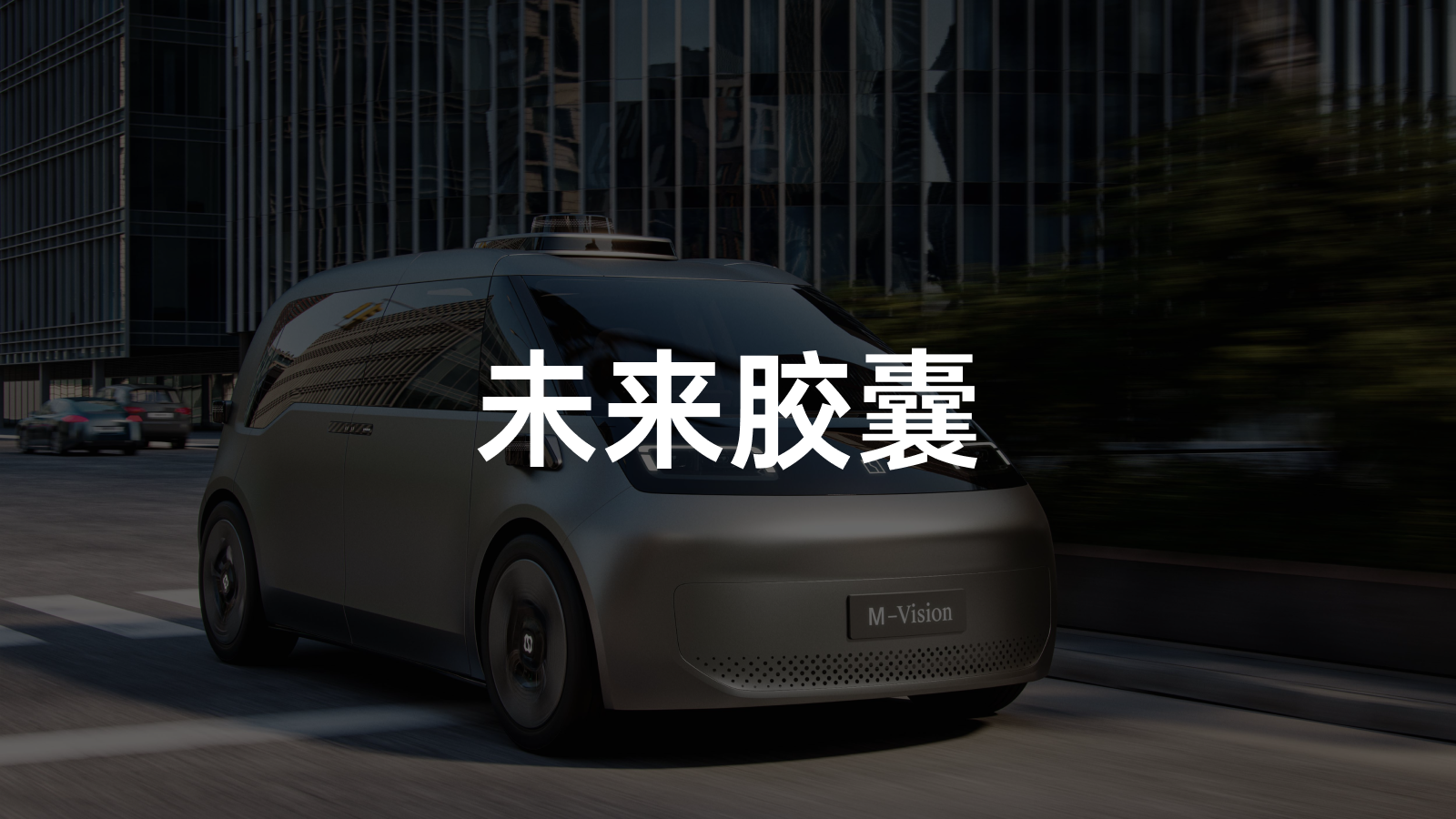What Should the Future Autonomous Cars Look Like?
Different people from various industries would give different answers to this question. If you ask an automobile company, they would tell you that the cars of the future should have a dynamic and flexible appearance, a spacious and bright interior, a simple yet technological design inside and out, as well as eco-friendly and clean energy forms.
However, if you were to ask an L4 autonomous driving company, you might get an answer like this: future autonomous cars should have controllable costs to make commercial travel services viable, advanced infrastructure to allow for easy and quick iteration and upgrades of their software.
As the saying goes, “taking the best from each other will yield mutual benefits.” The above examples exemplify the mindset of Jidou Cars and Waymo, an autonomous driving company.
For Jidou Cars, on the one hand, it has a mature product definition experience and engineering design capabilities. On the other hand, the SEA-M architecture is a design product of Jidou Cars for full autonomous driving, with L2-L4-level assisted driving access capabilities. SEA-M and the SEA platform, which includes the products Jidou 001 and Jidou 009, have deep origins in terms of electronic and electrical architecture, which can effectively improve R&D efficiency and cost control.
For Waymo, software can quickly access the hardware of vehicles with the SEA-M architecture, reducing the cost of development and iteration. More importantly, it can work together with Jidou Cars to create a custom autonomous driving vehicle from product definition to software and hardware, targeted to L4-level full autonomous driving. This will enable rapid deployment of the commercial market for autonomous driving travel.
And the product of this partnership, M-Vision, based on the SEA-M architecture, was announced on November 17th to have the conditions for mass production in 2024. The customized Waymo version based on this car has already appeared in Los Angeles.
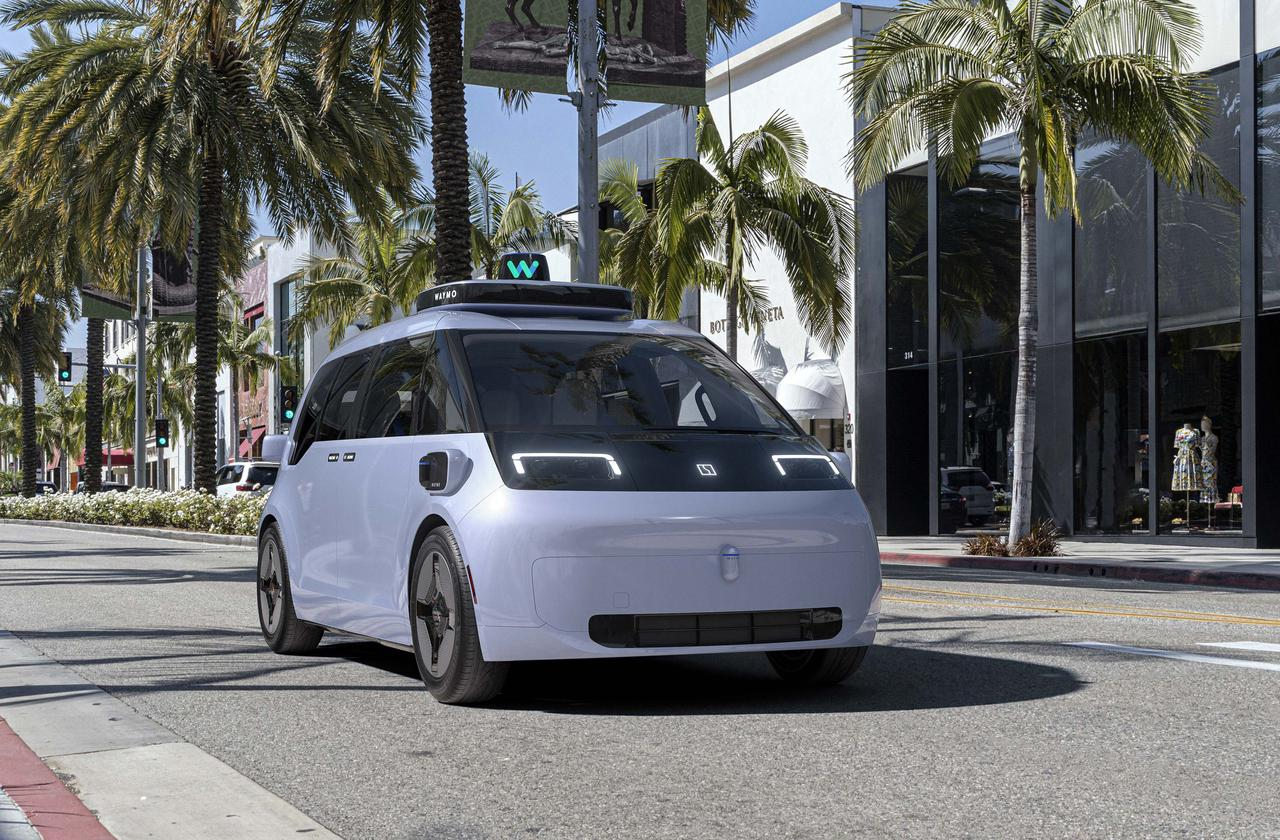
The last time I was excited about a MPV was because of the ID.Buzz. This time, seeing the Jidou Cars M-Vision have piqued my curiosity once again.
Capsule Hotel with Wheels
First and foremost, it should be cute!
If you were to ask me: what would the autonomous taxis look like on the road twenty to fifty years from now? My answer would definitely not be the “hybrid” Robotaxi shown below, which was based on a production car and modified without any aesthetic appeal.
And in many sci-fi movies and games, the post-apocalyptic style preferred by directors has given everyone a preconceived impression: future cars must be fierce and complicated, with crackling flames and flashes, and preferably with exposed engines or jet nozzles to satisfy their tastes.
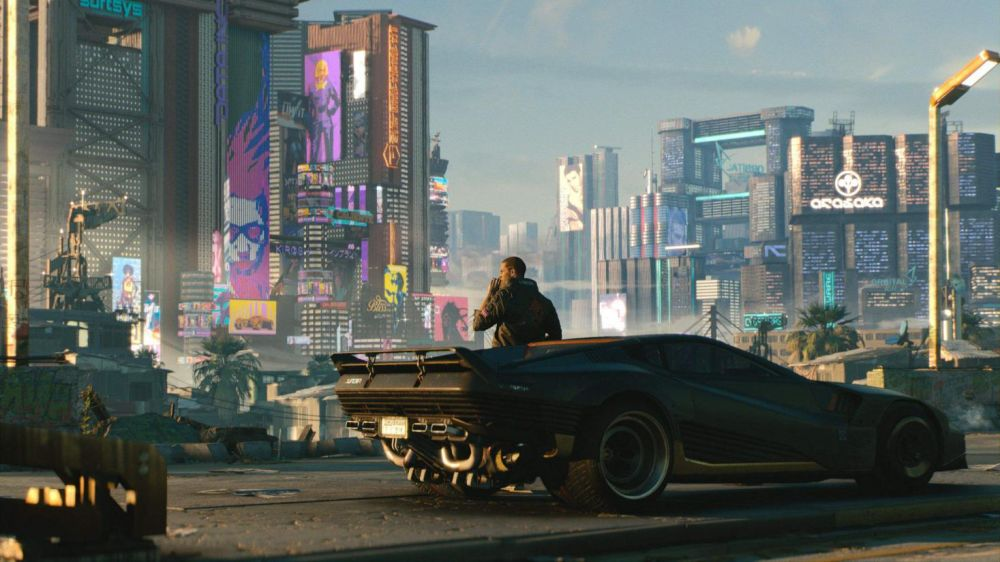
Seriously, are the directors too pessimistic in life? Can’t spacious and bright streets and simple and elegant designs represent the future?
So M-Vision really speaks to me. There is no scary design with a scary face and teeth that scares children, and the designer does not let go of himself and create the amazing and vulgar strokes just because it is a concept car. Everything is harmonious and natural, and even a little cute.
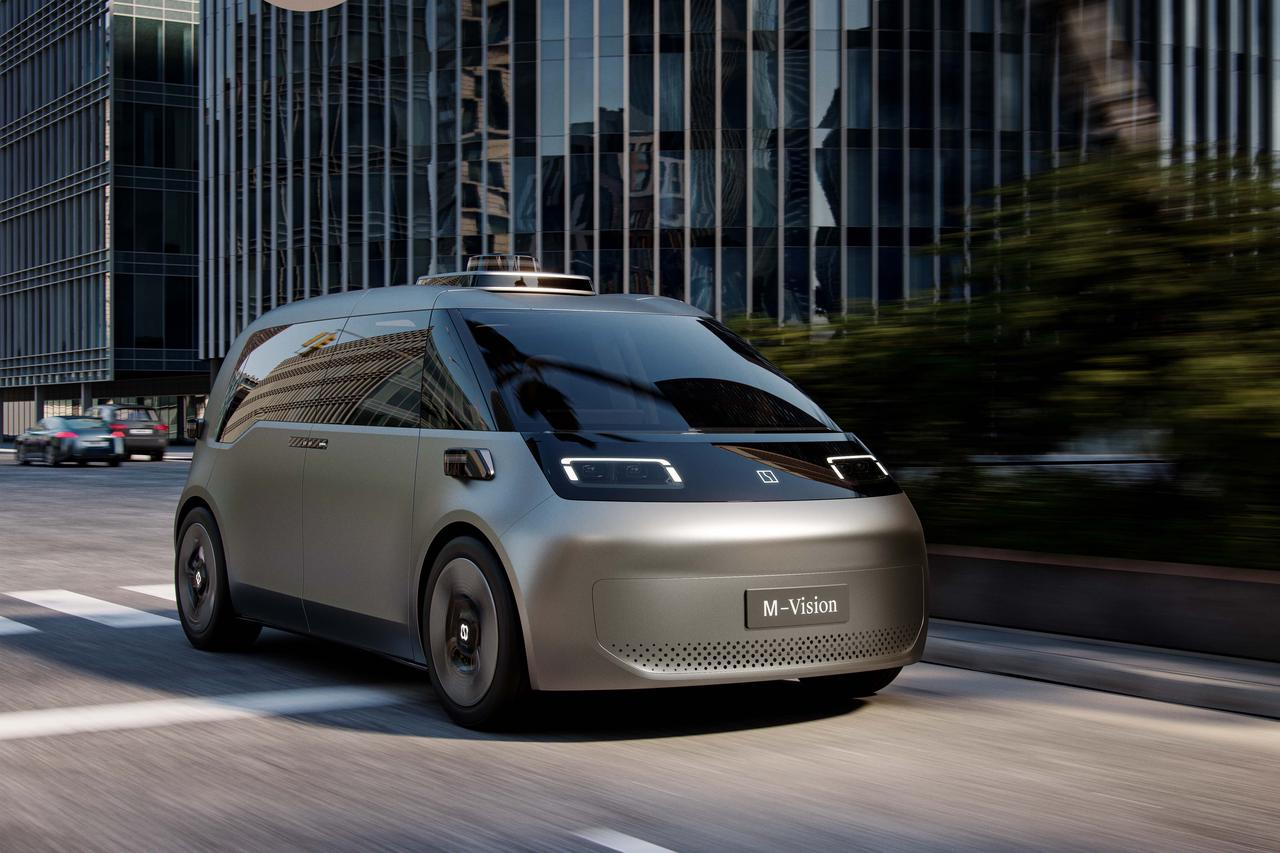
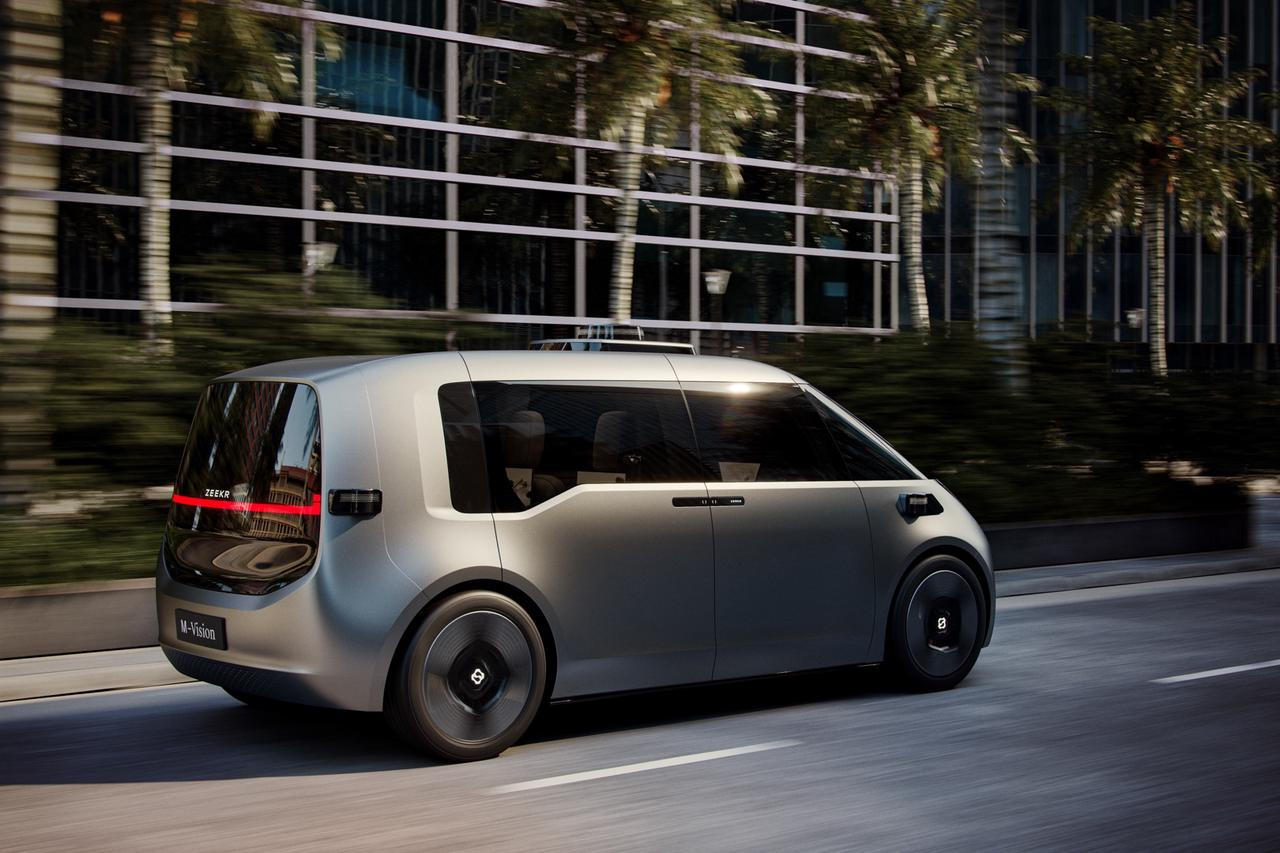
The design with short front and rear overhangs and a long wheelbase meets the requirements for space and functionality, and M-Vision looks like a “large capsule” for this reason.
However, a functional design without considering aesthetics is not enough. The last purely functionalist design was the matchbox apartment buildings in East Germany. Look, is this design, which is so full of functionality but dull, still happy to look at?
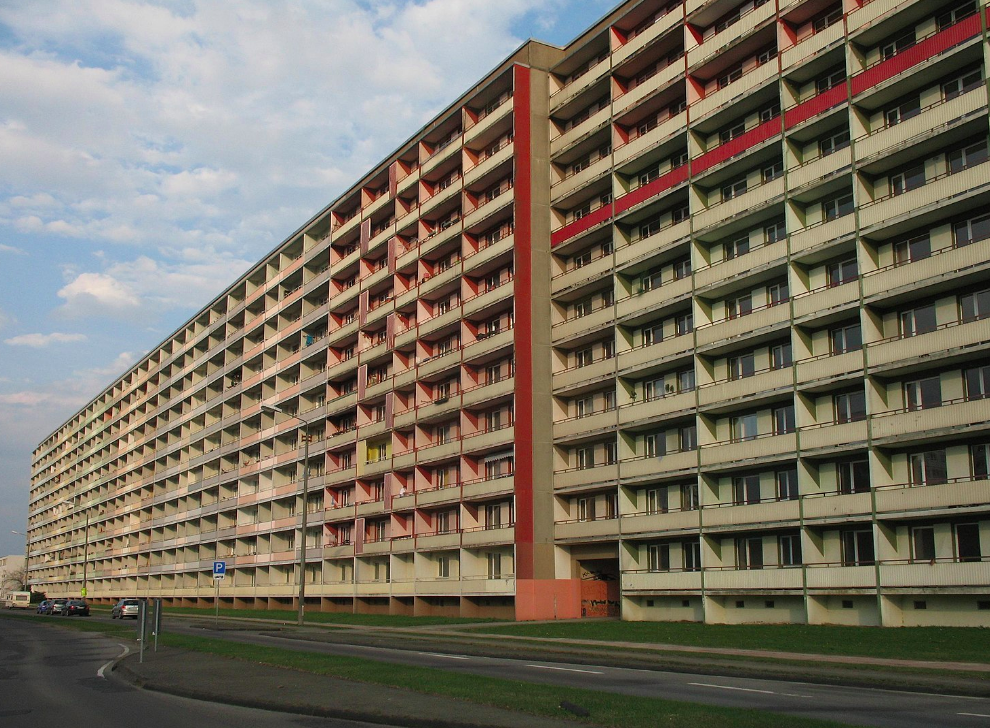
So, I am very glad that the designer of M-Vision is neither the “free and easy” school of thought nor the “rigid” old school. You see, the “door” shaped headlight group of M-Vision and the black decorative panel on the front face are still a bit like Shifu Master Shifu Raccoon in “Kung Fu Panda”?
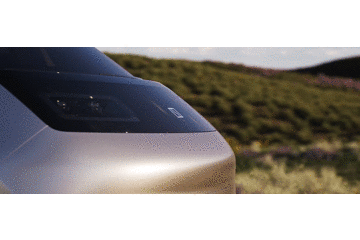

As a futurist, the cute “raccoon-style” front face of M-Vision perfectly matches my imagination of the future world.
Speaking of the headlights, I’m really relieved: Jinko has finally stepped out of the shadow of Lynk & Co and started to try their own exterior design language. I also expressed similar feelings about Jinko 009 before. Finally, I don’t have to explain to my non-car-savvy friends that although the headlights look similar, one is called “Jinko 001” and the other is called “Lynk & Co 01”, they are really different.
There is a saying that “true technology should make people not feel the existence of technology”, and I deeply agree with it, and so does the designer of M-Vision. The laser radar on the roof and around the car body are designed to be as smooth and non-aggressive as possible, and you can even see decorative light strips on the laser radar.

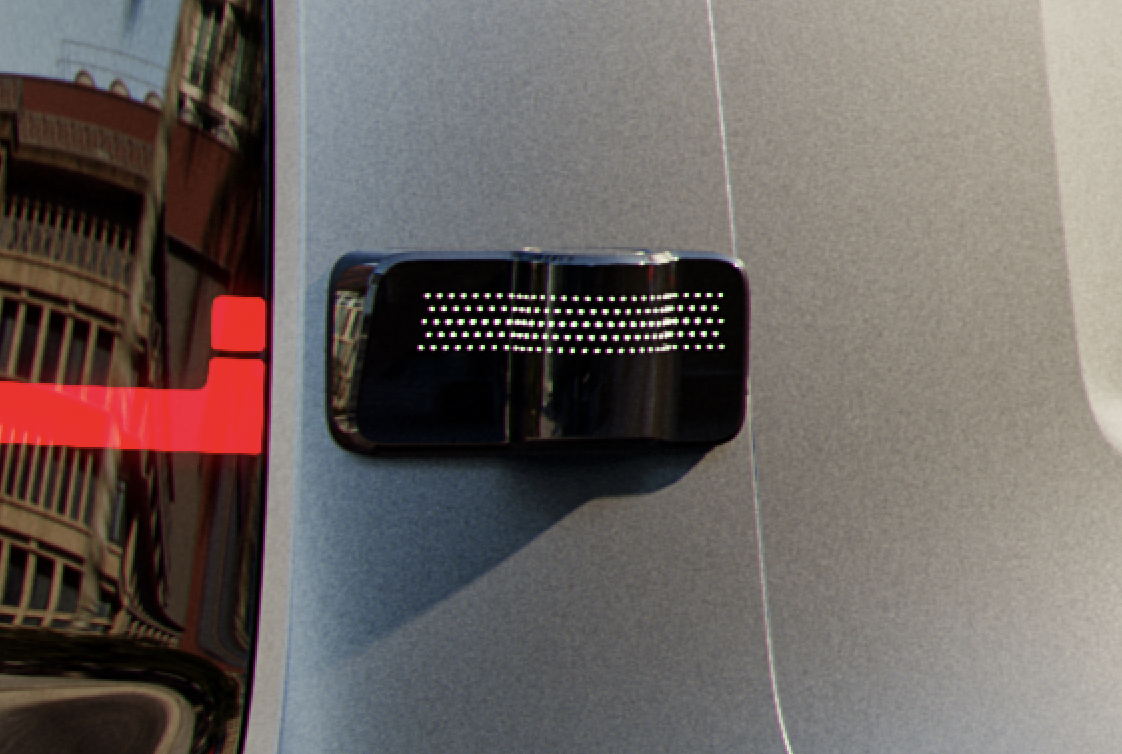
Since M-Vision is a level 4 Robotaxi, the passengers’ experience needs to be considered more. M-Vision has a large side window area and no need to worry about lighting problems.
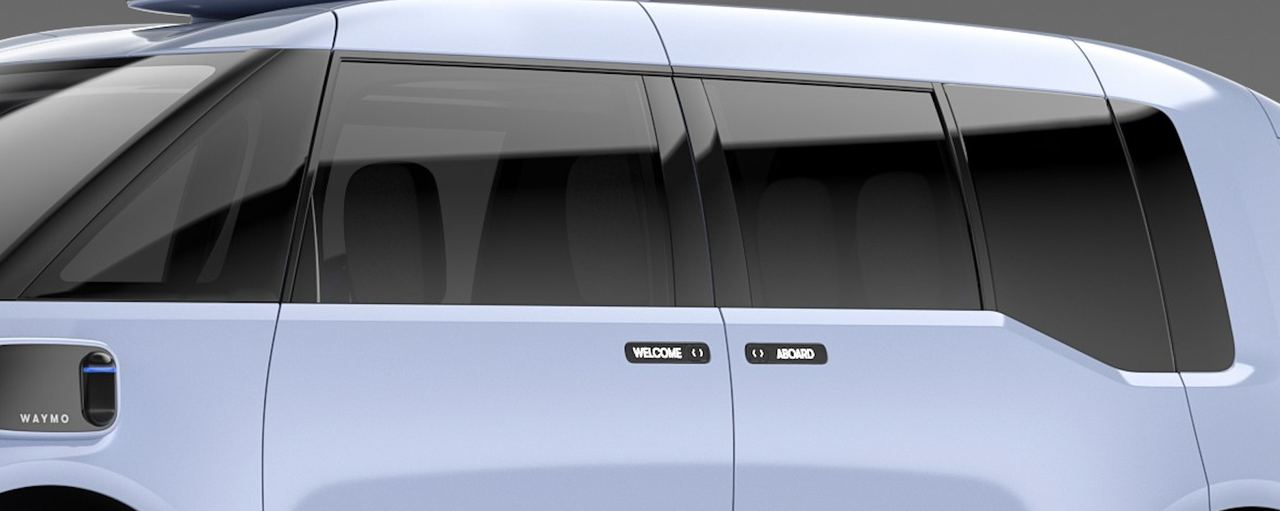
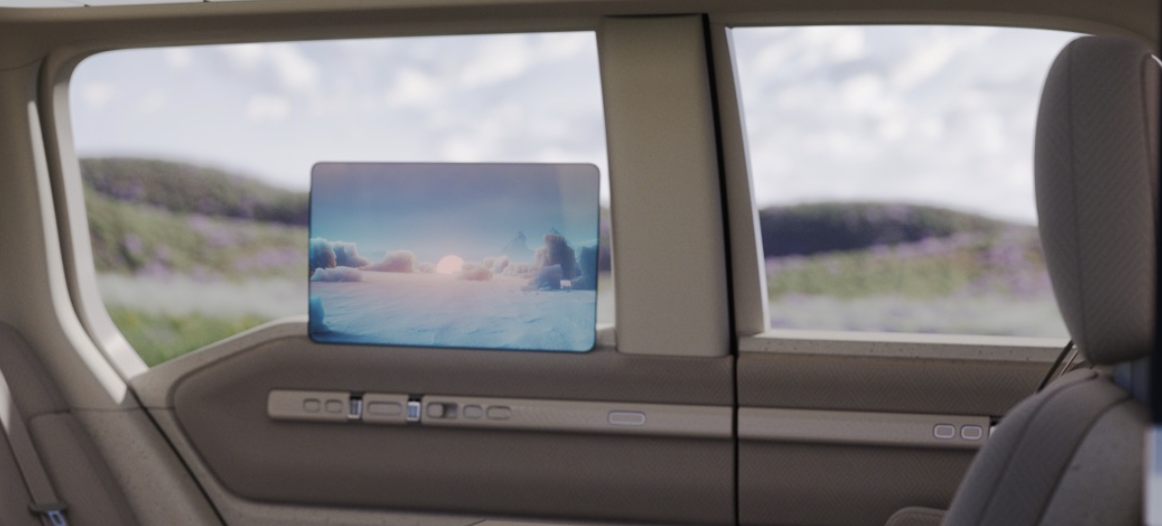
Unlike the many “symmetrical” style autonomous minibuses, M-Vision has a distinctive front and rear with metal-glossy car paint that wraps around the large rear window, and the edges have sharp cut corners.
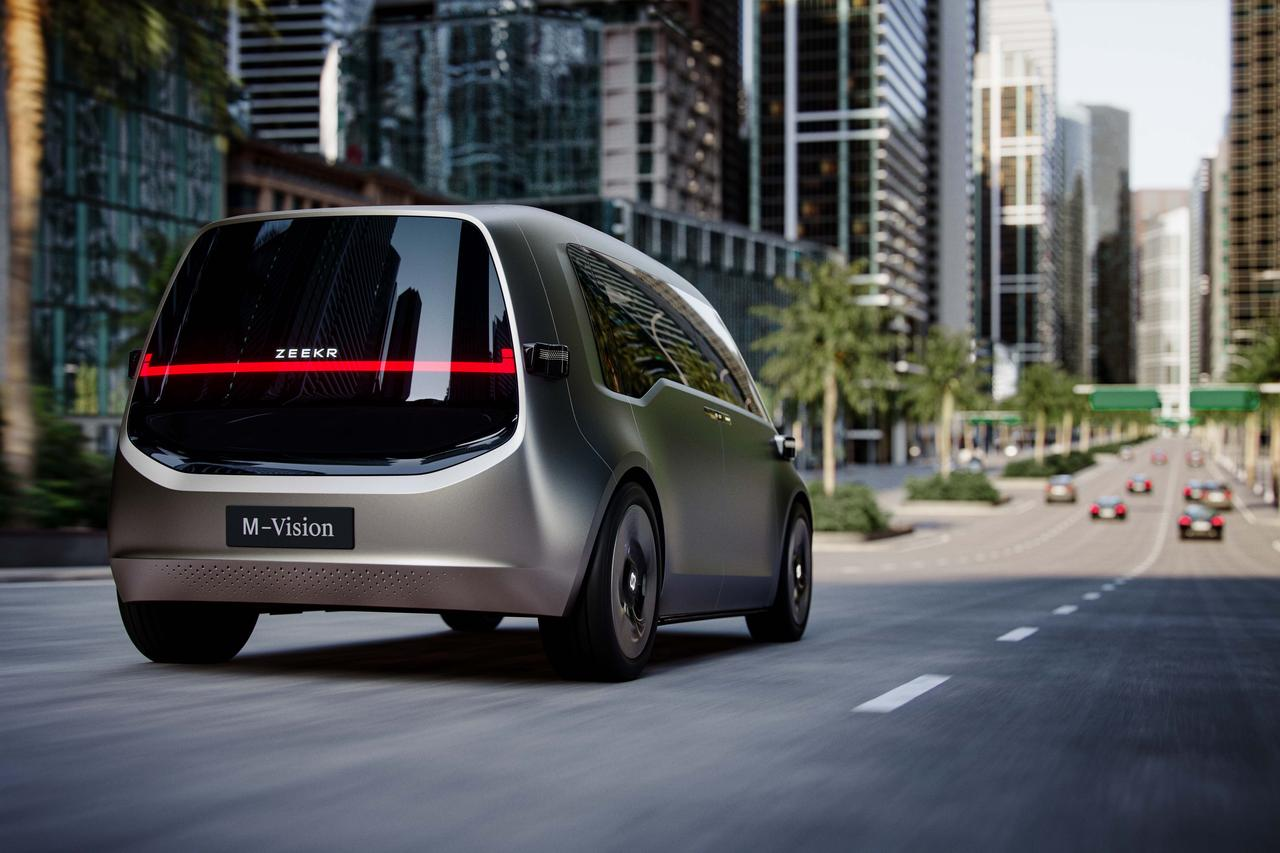
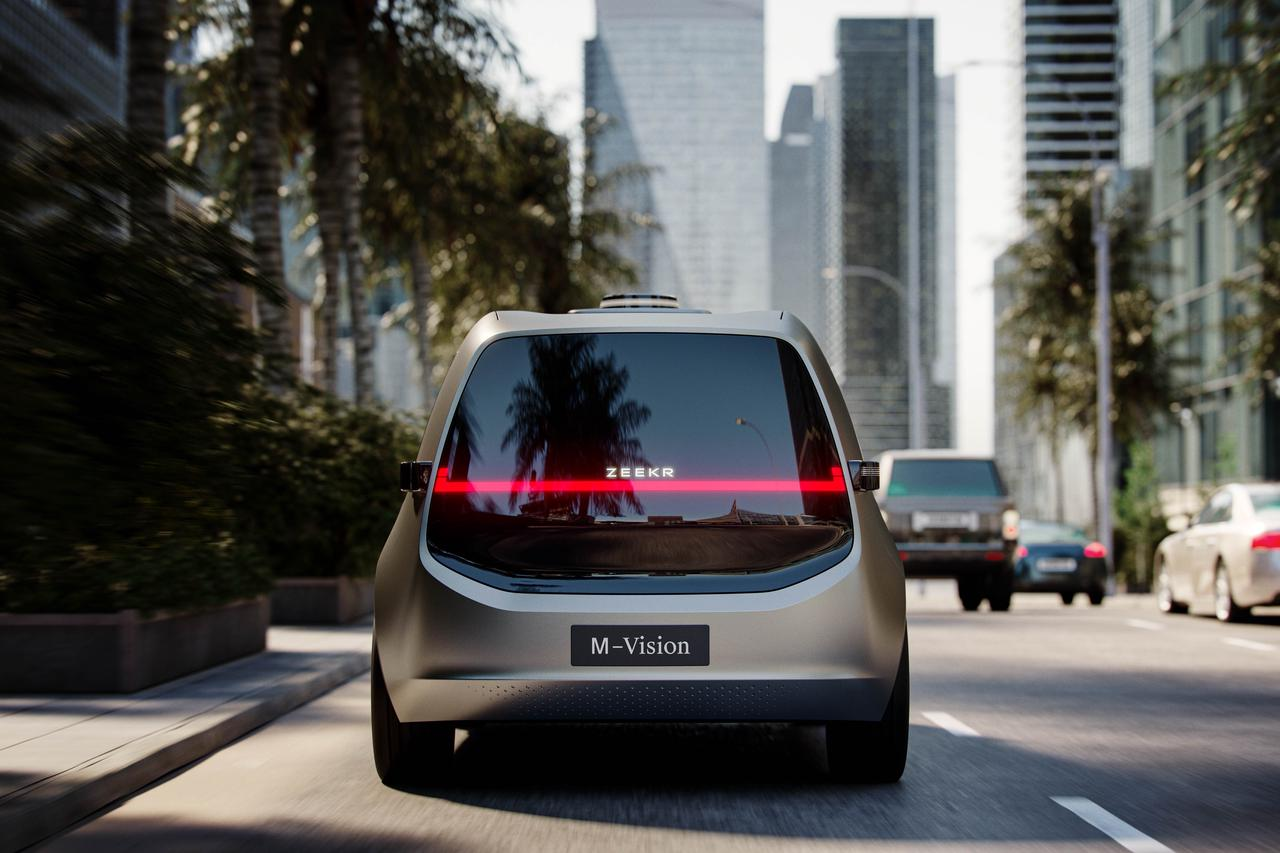
But M-Vision is obviously not that extreme. He taught American classmates Cybertruck a lesson with his round curve on the buttocks: “Love does not end well, and excessive strength must be humiliated.” Don’t be too extreme in design, in the future, it is still better to be gentle and cute.
Play Mahjong, Four plus One
Opening the car door of the Rolls-Royce has a sense of ceremony, but the alias of “suicide door” is also terrifying. So why not just open it together?
M-Vision chose the “sliding door”. After all, in the future world, everyone still needs to live seriously and feel the beauty. Whether you are Yao Ming or Maradona, the 1.4m maximum door opening, pillarless design, and low floor design can ensure your dignity in future travel.
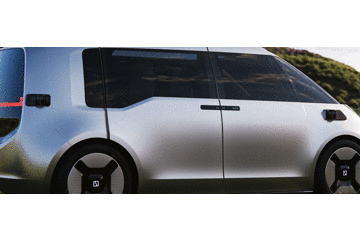
Although M-Vision thoughtfully designed the rotating seats and small table boards that can slide back and forth on the tracks, it is unfortunate that: because there is no human driver, the five passengers in the five seats cannot gather together to play mahjong.
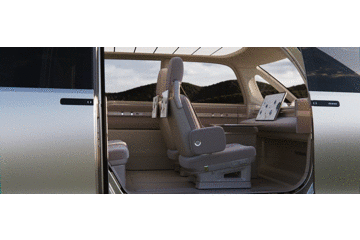
Although it has a considerable amount of internal space, M-Vision still made a compromise: don’t need to have three rows and 6/7 seats, 5 seats are enough. From the perspective of engineering design, adding another row of two seats is not difficult, but this is a Robotaxi for the urban short-distance travel market. The optimal solution for the experience is five seats plus the rotatable seats for drivers and passengers.
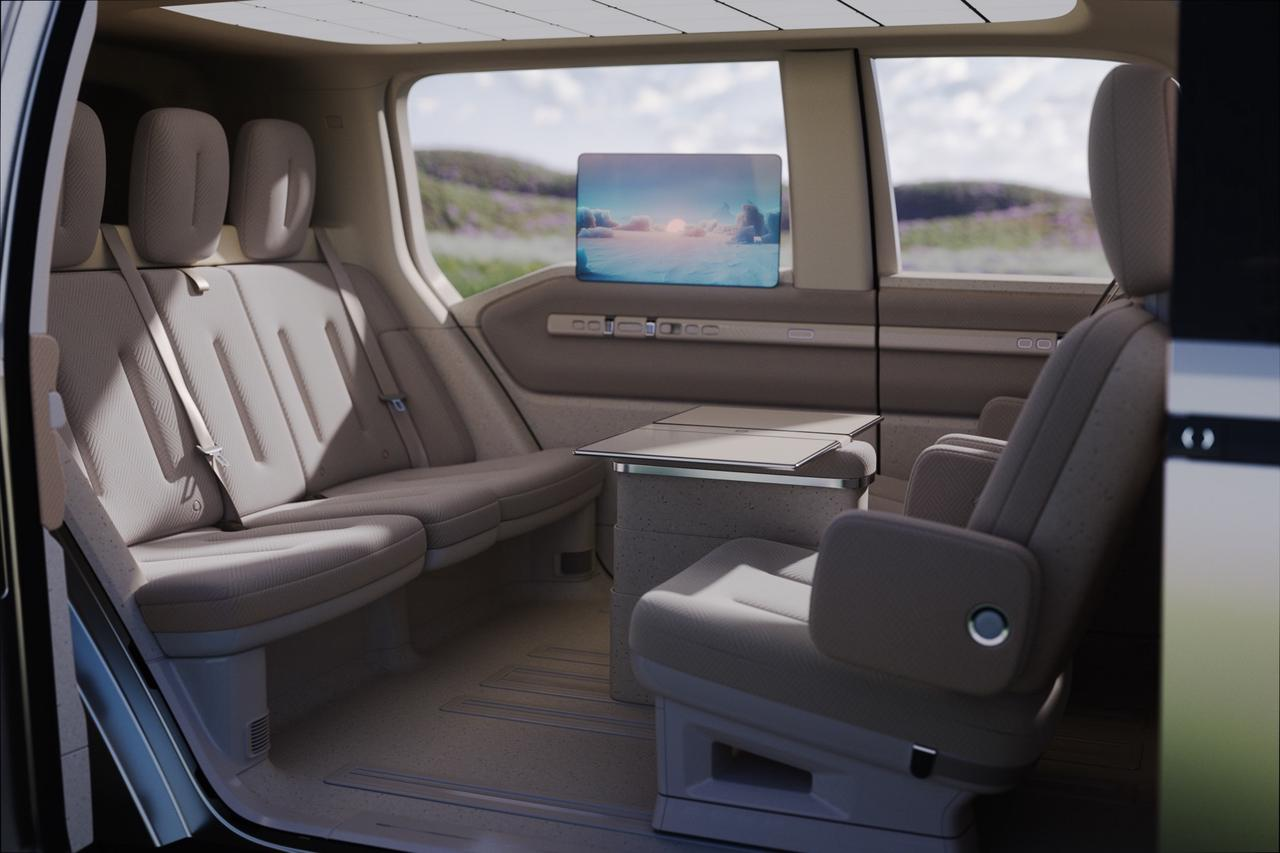
Check out the design details. Initially, I was puzzled by the bright and shiny bulge on the dashboard, and I couldn’t figure out its purpose until Yang Da Cheng, the COO of Xpeng, told us that we installed airbags for you, even though accidents might not happen in autonomous driving in the future. Without a dashboard, you can’t be exposed, can you? So why not design it as a work of art?

Therefore, you should also notice that during the driving process, you should still face forward, and not rotate the seat. After all, you wouldn’t want the airbag to hit you on the back instead of your face.
Speaking of safety, the M-Vision was designed by Xpeng’s European Innovation Center (CEVT) and China’s R&D team jointly, and therefore takes into account the global market’s safety standards: it complies with the NCAP five-star safety ratings in China, Europe, and the United States and the highest safety requirements of the US Highway Safety Insurance Association (IIHS).
We are limited by technological development, and seemingly unlimited imagination is still constrained by experience. The pad under the M-Vision’s airbag is one of the designated reasons. Although I am skeptical about using a touch screen for interaction in the future, it is indeed the best solution we can imagine.

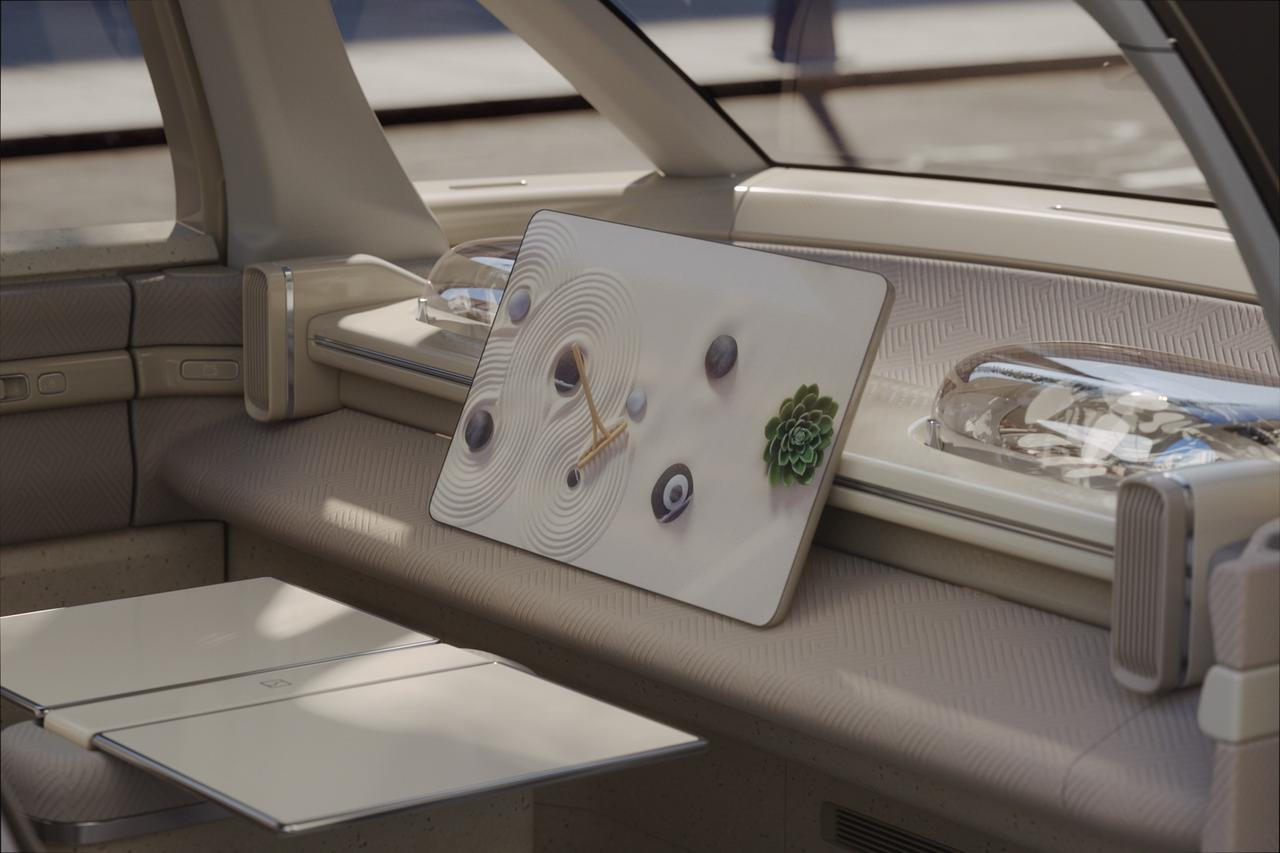
To put it simply, M-Vision is close to mass production. That is why Xpeng wasted a considerable amount of space to add two airbags and a protruding part behind the vehicle. M-Vision can also add operating hardware such as brake, accelerator pedal, and steering wheel, after all, L4 still needs driver debugging.
And here’s an even bigger surprise: according to Yang Xueliang, the Vice President of Geely, who posted on Weibo, the M-Vision we see now is the Robotaxi that Xpeng designed specifically for Waymo, and M-Vision plans to launch To C products in the future.## Translation
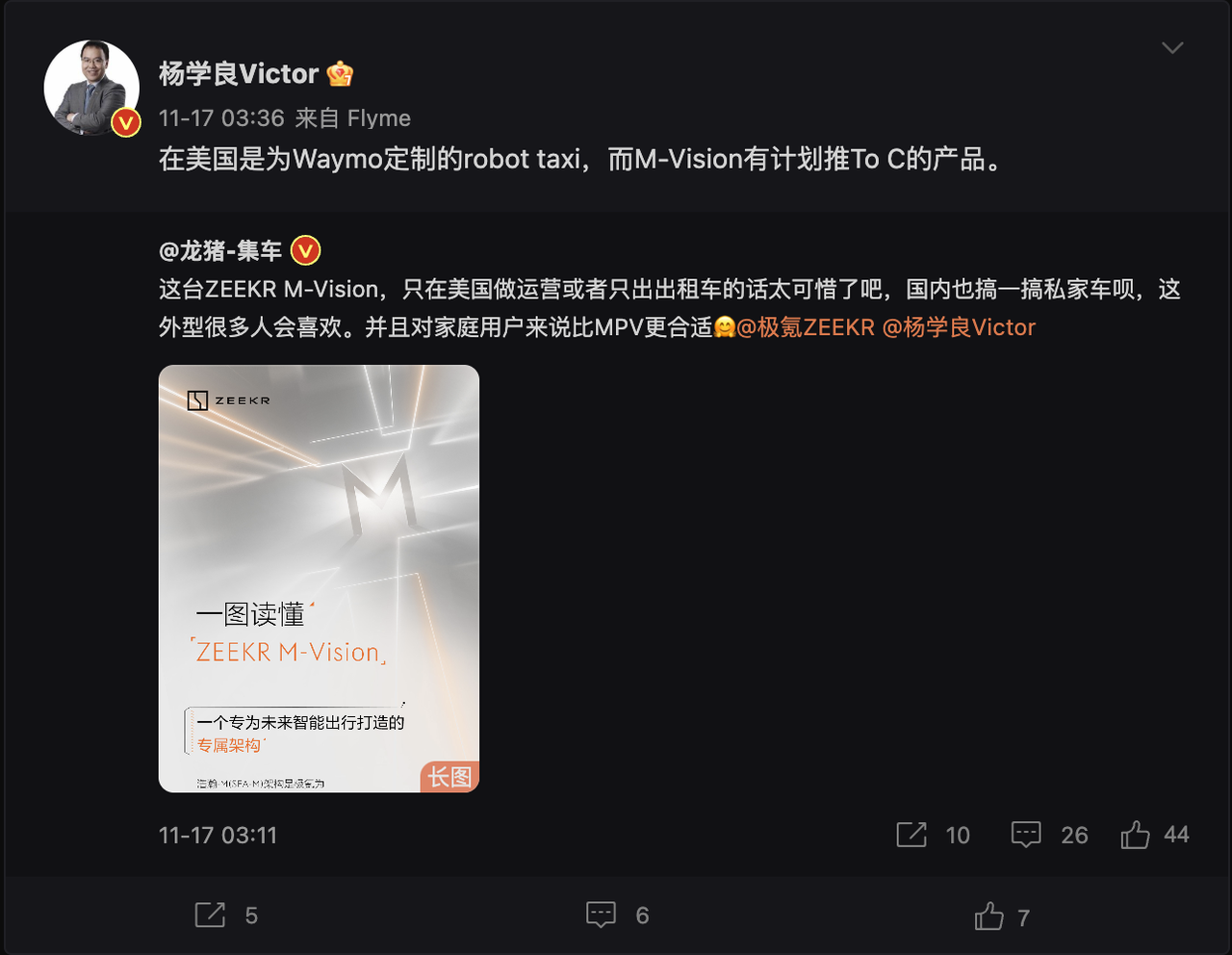
According to unverified rumors, the To C civil version of M-Vision will be designed and led by JiKe’s Chinese team, and the design of sliding doors and no B-pillars will be retained, with the internal codename CM2E.
This is likely to be JiKe’s second MPV product after JiKe 009. Based on the current product line, this vehicle is likely to have a layout distinct from JiKe 009, mainly targeting the family market priced at 300,000 to 400,000 RMB. If true, it will be an interesting MPV with a high degree of personality and practicality similar to Volkswagen’s ID.Buzz.
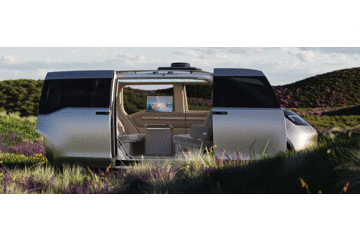
Following the definition of popular products in the market is the lowest-risk way to define similar products. We have seen many extended-range products after IDEA, and we have seen many pure electric sports cars after XPeng. However, this “follow-up” method is ultimately a kind of timidity. A company that does not have innovative product definitions may succeed, but it will not be remembered for a long time.
Looking back at history, JiKe 001 achieved good market performance with its seemingly niche “hunting vehicle” identity, and now I am equally excited about the future of M-Vision.
Awards, for two examples of Sino-US cooperation
Under the push of the “reverse globalization” trend, we have all more or less reduced our open windows, and the former “global village” has closed its doors. Some may ask, what did both parties gain from the cooperation with Waymo?
Waymo’s gain has already been explained at the beginning of the article: to get a customized vehicle that is fully focused on L4 autonomous driving, from definition to product, software to hardware.
From the perspective of JiKe, if pre-installed mass-produced assisted driving is down-to-earth work, then cooperation with Waymo is more like investment for the future. On the one hand, as a leader in Robotaxi commercial operation, JiKe can rapidly enter the market through cooperation. As leading companies in the hardware and software fields, JiKe and Waymo can create various commercial models and application scenarios, including ride-hailing services in the future.
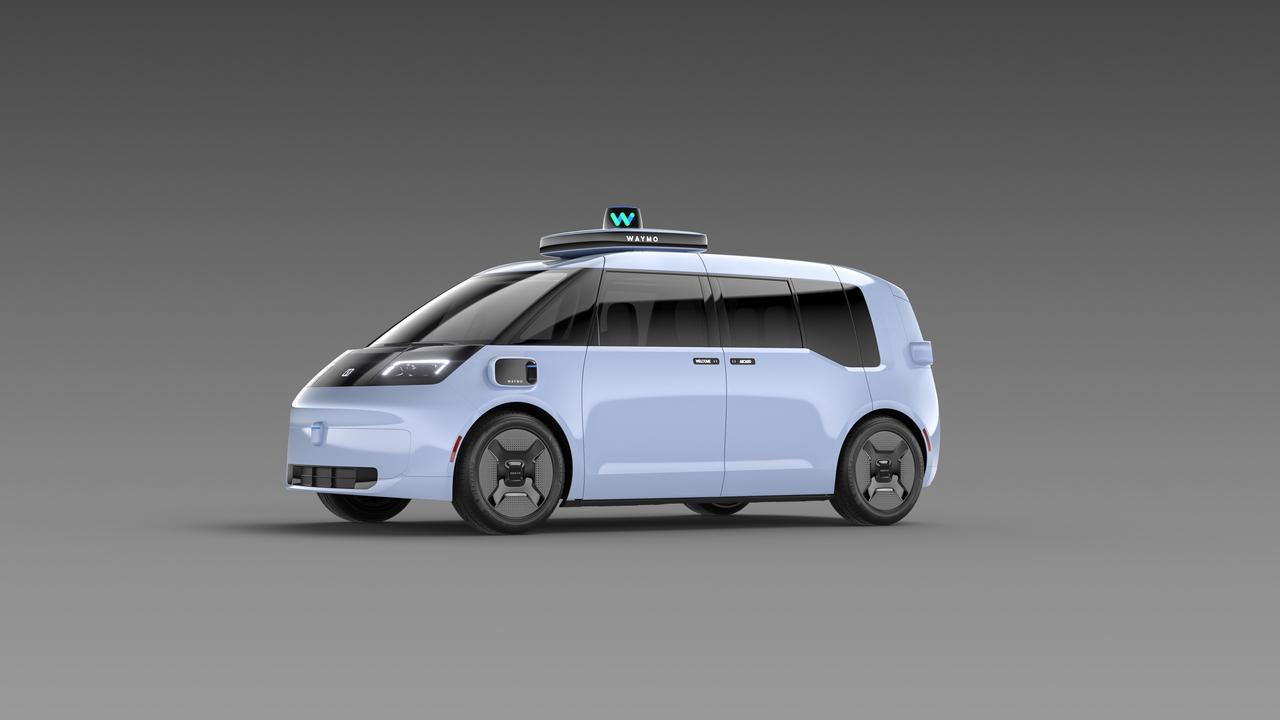
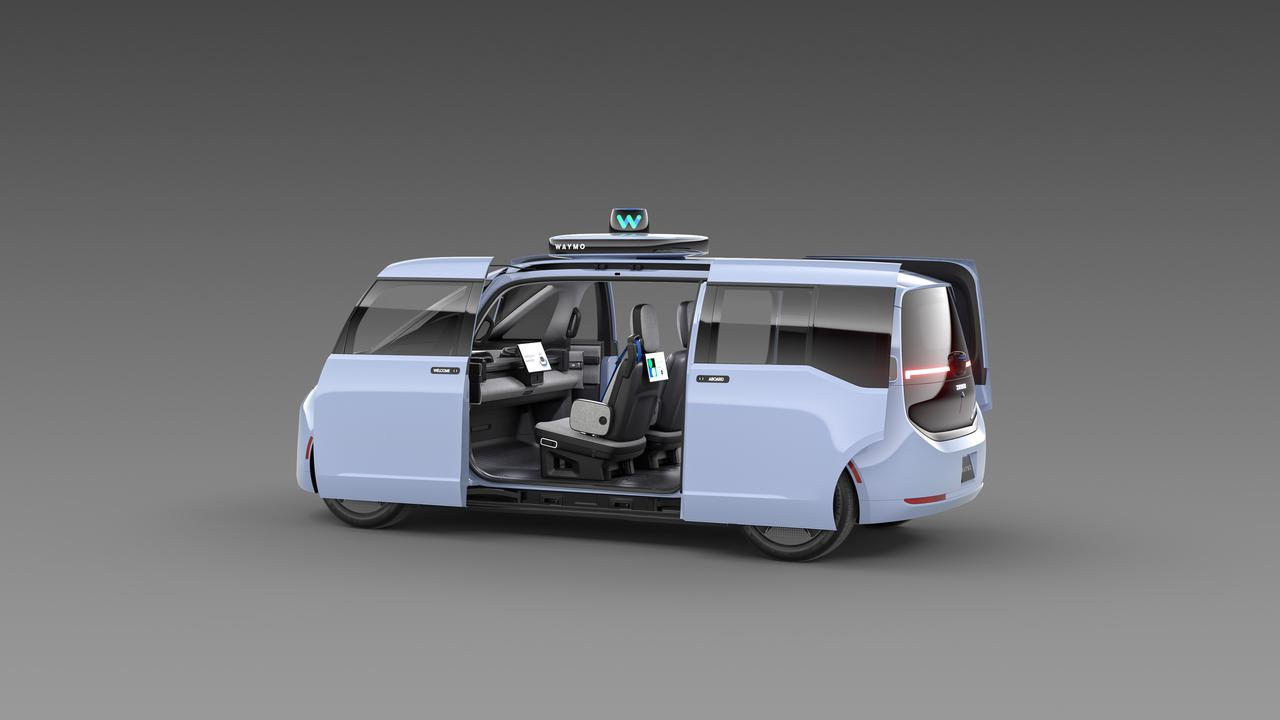
On the other hand, the successful landing of M-Vision will also serve as a model for commercial cooperation, attracting more L4 travel companies and JiKe to cooperate. We have already seen Geely’s “London Black Taxi” produced on the streets of London, who can guarantee that we will not see “ZEEKR Robotaxi” all over the world in the future?
Finally, with the experience of customized vehicle models for Waymo, the process in the development of civilian derivative models in M-Vision will also be greatly reduced, and this car can fill the gap in JiKe’s mid-to-high-end MPV market.
Therefore, I not only look forward to seeing M-Vision on the streets of the United States in the future, but also look forward to an MPV that is both cute and practical becoming a “clear stream” in the domestic household MPV market.
This article is a translation by ChatGPT of a Chinese report from 42HOW. If you have any questions about it, please email bd@42how.com.
